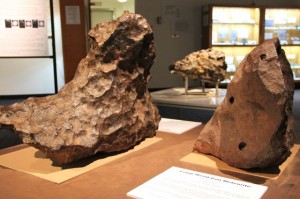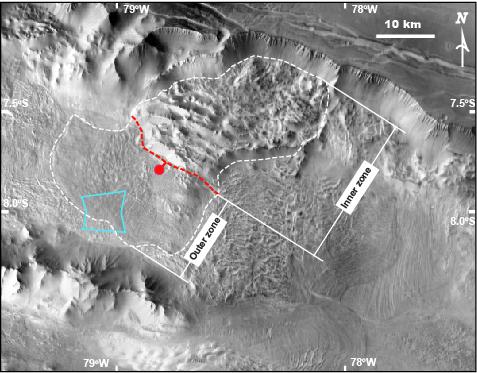Researchers from JPL and UCLA came together on May 27th to celebrate the adoption of a Memorandum of Understanding (MOU) to promote cooperation between scientists at both institutions. This first joint JPL-UCLA planetary science workshop under the auspices of the MOU was attended by over ninety scientists and members from both institutions (approximately half from JPL and half from UCLA). The workshop featured 9 invited science talks and 35 posters in two poster sessions. UCLA’s Dean of Physical Sciences Joe Rudnick and JPL’s Chief Scientist Dan McCleese both signed the MOU, and each institution has a copy. The workshop was a great success and undoubtedly marks the beginning of many productive collaborations.
May 29, 2015: The Northern Lights: From Myths to Modern Science
Acclaimed Norwegian solar physicist Pål Brekke will lead a discussion on the fascinating phenomena of the Aurora Borealis centered on his new prize-winning documentary, The Northern Lights: A Magic Experience (duration 25 minutes). After the screening, Brekke will talk about his experience as a longtime observer of the northern lights and his work with the documentary. In addition to Brekke’s work as a senior adviser at the Norwegian Space Center, he also worked for the European Space Agency as the deputy scientist for the Solar and Heliospheric Observatory at NASA Goddard Space Flight Center.
First Joint JPL-UCLA Planetary Science Workshop Announced
We are extremely happy to announce that JPL and UCLA have agreed upon a Memorandum of Understanding (MOU) “to enable collaboration in the planetary sciences between UCLA and JPL to promote the stature, visibility, and excellence of the field…by facilitating interactions among scientists and students at both institutions.”
To mark this occasion, we are celebrating with a collaborative science workshop to be held from 10am-4pm on Wednesday, May 27th, 2015 at UCLA. The meeting will include the joint signing of the MOU at 3pm by UCLA’s Senior Dean Joe Rudnick and JPL’s Chief Scientist Dan McCleese.
This first collaborative meeting under the auspices of the MOU will be of broad planetary scientific scope. In addition to invited talks from each institution, we seek posters and discussion on planets, exoplanets, small bodies, space physics, and related areas, particularly as pertinent to broadening partnerships between researchers and students at the two institutions.
Registration is free at:
http://planets.ucla.edu/meetings/past-meetings/jpluclamou/registration/
Catered lunch will be provided for those who register by May 15th.
May 1st, 2015: Io’s magma ocean: Insights from electromagnetic induction
Theoretical models of tidal dissipation in Io’s interior have provided support for a global subsurface melt layer. The extremely high temperature of the lava erupting on Io’s surface also hints at an extremely hot interior consistent with an internal magma ocean. However, the only direct evidence of a subsurface magma ocean in Io is provided by the electromagnetic induction response observed by Galileo (Khurana et al. 2011, Science, 332, 1186).
Using Jupiter’s rotating magnetic field as a sounding signal, Khurana et al. (2011) analyzed the response of Io observed during four different flybys of Io by the spacecraft Galileo, and showed that the magnetic field response is global, variable and in sync with the time varying field of Jupiter. Modeling of this signature shows that the induction response from a completely solid mantle model is inadequate to explain the magnetometer observations. However, a layer of asthenosphere > 50 km in thickness with a rock melt fraction ≥ 20% is adequate to accurately model the observed magnetic field.
In this presentation, after summarizing our current knowledge of Io’s interior from Galileo’s induction measurements, I will outline a scheme to further infer properties of Io’s interior, especially its internal temperature profile, by marrying the principles of thermodynamics with those of electromagnetism. In particular, we would obtain guidance on stable mineral phases and their physical properties (such as density, melt state and electrical conductivity) from thermodynamic principles whereas how the resulting internal conductivity profile affects the magnetic environment around Io from electromagnetic theory. I will also explore how induction measurements could be obtained at multiple frequencies from a future mission and be used to constrain both the location and the thickness of the magma ocean.
Finally, I will explore the consequences of the global magma ocean of Io on its physical properties such as the current sites of tidal energy dissipation, the absence of an internal magnetic field and a lack of plate tectonics on its surface.
Prof. Jean-Luc Margot says to stop blaming the Moon
 In a study published online in the journal Nursing Research, Professor Jean-Luc Margot debunks the myth that the full Moon has an influence on the number of hospital admissions, births, and other human affairs. Margot explains that this belief stems from “confirmation bias” – where we take note of evidence that reinforces beliefs we already have and ignore evidence that conflicts with those beliefs.
In a study published online in the journal Nursing Research, Professor Jean-Luc Margot debunks the myth that the full Moon has an influence on the number of hospital admissions, births, and other human affairs. Margot explains that this belief stems from “confirmation bias” – where we take note of evidence that reinforces beliefs we already have and ignore evidence that conflicts with those beliefs.
For more information, read the full press release.
Two large meteorites added to UCLA Meteorite Gallery
 Two large iron meteorites are now on display at the UCLA Meteorite Gallery. The specimens are both on long-term loan to the gallery through the generosity of UCLA alumnus Peter Utas and his wife, Barbara Broide. The larger of the two specimens is 811 pounds, making it the largest meteorite on display in the gallery.
Two large iron meteorites are now on display at the UCLA Meteorite Gallery. The specimens are both on long-term loan to the gallery through the generosity of UCLA alumnus Peter Utas and his wife, Barbara Broide. The larger of the two specimens is 811 pounds, making it the largest meteorite on display in the gallery.
To learn more, read the full press release here.
April 17, 2015: Southern Aphrodite fracture zone, Venus; Subsurface to surface volcano–tectonic connections and implications for heat transfer
We are undertaking a detailed structural analysis of a targeted portion of an Aphrodite fracture zone in order to understand the architectural evolution through time and space and, ultimately, to construct thermal models in order to gain insight into possible mechanisms of heat transfer on Venus. The target area (15S-20S/110E-124E), characterized by extreme density of faults and pit chains, encompasses over 700,000 km2. It is part of an extensive fracture zone that overlaps with focused coronae chains to the east,and splits into regional splays to the west,cutting highland crustal plateaus. Hybrid tectono-volcanic structures,change along strike from en echelon fractures, fractures, pit-‐chains, graben, leaky dikes, and canali. Widths range from 1 to >5 km; lengths exceed several 100 km; structure spacing ranges from 10’s of km to lineament overlapping, intersecting, or coalescing. Hybrid structures, which play a key role in transferring material to/from depth, both predate and postdate surface deposits.The fracture zone domain is the youngest regional domain in Aphrodite Terra, and extends ~2000 km in width and over 6000 km in length. The hybrid structures likely play a significant role in cooling reflecting contemporary mechanisms/processes.
Co-authors: David Tovar1, J.B. Swenson1, and I. López2, 1 University of Minnesota Duluth, 2 Universidad Rey Juan Carlos.
April 10th, 2015: The Tectonic History of Enceladus as Revealed in its Ridged Terrains
Fissures near the south pole of Saturn’s icy moon Enceladus are observed to be erupting jets of water, which illustrates that the small moon is presently geologically active. Farther to the north, ridges, fractures, and relaxed crater topography preserve evidence for a surprisingly complex history of recent tectonic and thermal activity on the small moon. Here we demonstrate that the regions near the south pole, and along the leading and trailing hemispheres are each morphologically distinct, suggesting unique tectonic deformation events for each area. Previous researchers have demonstrated that some terrains appear to have experienced more ductile deformation, pointing to a significant amount of heat flux generated in the interior of the moon. We show that some ridged terrains, particularly on the leading and trailing hemispheres, preserve a history of apparent brittle deformation that accommodated significant contraction. This analysis of the ridge terrains seeks to constrain the recent and long-term tectonic history of Enceladus.
Watkins’ research featured as Planetary Geomorphology Photo of the Month

EPSS graduate student Jessica Watkins explains her research about massive landslides on Mars in a new post featured on the Planetary Geomorphology Photo of the Month blog run by Dr. Mary Bourke. Watkins uses satellite imagery of Mars to identify and study signs of long-runout landslides, large scale movement of material over distances greather than 50 kilometers. To learn more about her work, read the full post.
March 13th, 2015: SOHO and STEREO satellite comet photometry: Contributions from sodium and heat
The light curves of the small Kreutz sungrazing comets in different filters in the coronagraphs aboard the SOHO and STEREO satellites are distinctive and different. Most famous is the brightness excess in the SOHO C2 and C3 orange filters, which Biesecker et al. (2002) and Knight et al. (2010) assign to the prominent yellow-orange sodium D line doublet emission at 5889 Å and 5895 Å. I have reviewed and synthesized comet sodium emission data in the literature spanning a wide range of heliocentric distances, r. Based on this synthesis, the temporary steep r^−8 brightness “kink” over r = 0.16 AU to 0.12 AU – superimposed upon the otherwise generally standard r^−4 brightening trend – can be explained by rapidly increasing atomic sodium resonant fluorescence emission relative to the dust continuum brightness. At r ˂ ~0.05 AU, heat from the coma dust grains glowing at T > 1200º K should bleed into IR, red, and clear filter channels, resulting in particularly severe contamination if the albedo of coma dust is extremely low, as suggested by stellar occultation data (e.g., Lacerda & Jewitt 2012). I present a model to extract the scattered sunlight signal from sodium and heat emission in SOHO and STEREO photometry.




